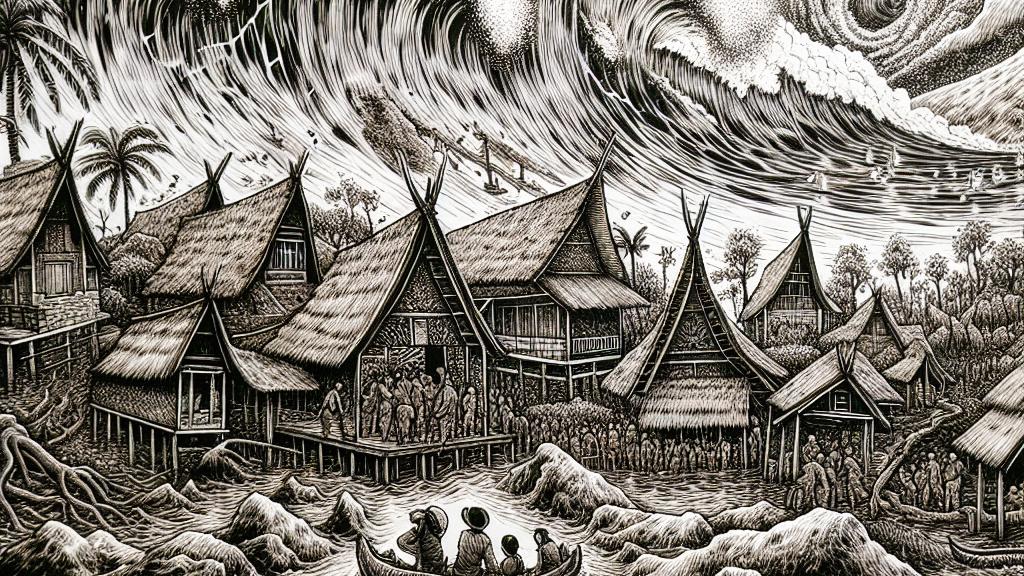Discovering How Local Wisdom Transforms After a Tsunami
Overview
- Simeulue Island's 'smong' wisdom played a pivotal role in saving lives during the tsunami.
- The narrative of smong has evolved, influencing music and even children's names today.
- Preserving this rich cultural heritage faces significant challenges from technology and external influences.

The Remarkable Survival of Simeulue Island
Nestled off the southern coast of Aceh in Indonesia, Simeulue Island tells a gripping tale of resilience and survival. In the face of the massive 2004 Indian Ocean tsunami, where devastation struck so many, this island experienced a shocking statistic: only a few locals lost their lives. The secret behind their survival? It's a powerful cultural tradition known as smong, which educated the community on how to detect nature's ominous signals. For instance, people learned to recognize that a strong earthquake and a sudden receding of seawater were their cues to rush to safety. Passed down through generations since an earlier tsunami in 1907, this wisdom became ingrained in the island's very identity. When the signs manifested, families knew precisely what to do, transforming a potential disaster into a remarkable story of community survival.
Transforming Traditions Through Music
What’s fascinating is how the smong narrative has evolved and now pulses throughout the local culture, particularly in music. Traditionally, subjects of nafi-nafi (oral storytelling) have been reimagined and brilliantly infused into modern nandong songs. Local artists have expertly woven the smong concept into catchy lyrics that not only entertain but educate, turning vital safety lessons into memorable melodies. Imagine this catchy line: "Linon uwak-uwakmo (The earthquake rocks you like a cradle)", followed by, "Smong dumek-dumekmo (The tsunami is your bathing water)". This playful yet poignant take on survival has made waves, quite literally, as students recall these songs in their classrooms, inspired and informed by unforgettable tunes. One young resident even noted, "Hearing a 'smong' song at school felt empowering. I knew exactly how to react if a tsunami hit!"
Challenges to Preservation
However, the journey to preserve the precious legacy of smong is not without its hurdles. Today, technology is often a delightful distraction, pulling the younger generation away from the enriching practice of storytelling. As one concerned mother put it, "We used to gather together after Maghrib prayers to enjoy the rich tapestry of smong tales. Now? My kids are glued to their screens!" This shift signifies a troubling change, compounded by the encroachment of globalization, which often prioritizes outside influences over local heritage. Furthermore, the diminishing use of native languages, such as Devayan, poses a serious threat to the continuation of the smong narrative. Without these languages, the very essence of smong, deeply rooted in its dialects and expressions, risks becoming diluted or forgotten. In light of these challenges, the community must stand united—launching initiatives that revive storytelling traditions and perhaps even constructing monuments that celebrate their heritage. Only through collective action can the captivating lights of smong continue to shine brightly for future generations.

Loading...